
Adeline Virginia Woolf was an English writer. She is considered one of the most important modernist 20th-century authors. She pioneered the use of stream of consciousness as a narrative device.

The Bloomsbury Group was a group of associated British writers, intellectuals, philosophers and artists in the early 20th century. Among the people involved in the group were Virginia Woolf, John Maynard Keynes, E. M. Forster, Vanessa Bell, and Lytton Strachey. Their works and outlook deeply influenced literature, aesthetics, criticism, and economics, as well as modern attitudes towards feminism, pacifism, and sexuality.

Duncan James Corrowr Grant was a Scottish painter and designer of textiles, pottery, theatre sets, and costumes. He was a member of the Bloomsbury Group.
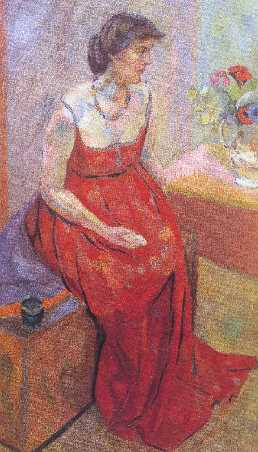
Vanessa Bell was an English painter and interior designer, a member of the Bloomsbury Group and the sister of Virginia Woolf.
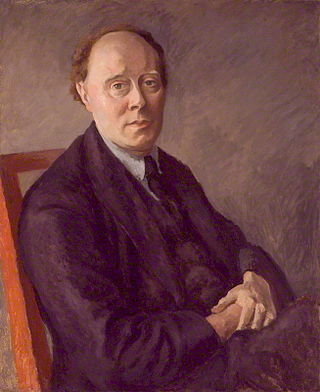
Arthur Clive Heward Bell was an English art critic, associated with formalism and the Bloomsbury Group. He developed the art theory known as significant form.

Roger Eliot Fry was an English painter and critic, and a member of the Bloomsbury Group. Establishing his reputation as a scholar of the Old Masters, he became an advocate of more recent developments in French painting, to which he gave the name Post-Impressionism. He was the first figure to raise public awareness of modern art in Britain, and emphasised the formal properties of paintings over the "associated ideas" conjured in the viewer by their representational content. He was described by the art historian Kenneth Clark as "incomparably the greatest influence on taste since Ruskin ... In so far as taste can be changed by one man, it was changed by Roger Fry". The taste Fry influenced was primarily that of the Anglophone world, and his success lay largely in alerting an educated public to a compelling version of recent artistic developments of the Parisian avant-garde.

Judy Chicago is an American feminist artist, art educator, and writer known for her large collaborative art installation pieces about birth and creation images, which examine the role of women in history and culture. During the 1970s, Chicago founded the first feminist art program in the United States at California State University, Fresno which acted as a catalyst for feminist art and art education during the 1970s. Her inclusion in hundreds of publications in various areas of the world showcases her influence in the worldwide art community. Additionally, many of her books have been published in other countries, making her work more accessible to international readers. Chicago's work incorporates a variety of artistic skills, such as needlework, counterbalanced with skills such as welding and pyrotechnics. Her most well-known work is The Dinner Party, which is permanently installed in the Elizabeth A. Sackler Center for Feminist Art at the Brooklyn Museum. The Dinner Party celebrates the accomplishments of women throughout history and is widely regarded as the first epic feminist artwork. Other notable art projects by Chicago include International Honor Quilt, Birth Project, Powerplay, and The Holocaust Project. She is represented by Jessica Silverman gallery.

The Dinner Party is an installation artwork by American feminist artist Judy Chicago. There are 39 elaborate place settings on a triangular table for 39 mythical and historical famous women. Sacajawea, Sojourner Truth, Eleanor of Aquitaine, Empress Theodora of Byzantium, Virginia Woolf, Susan B. Anthony, and Georgia O'Keeffe are among the symbolic guests.

Charleston, in East Sussex, is a property associated with the Bloomsbury group, that is open to the public. It was the country home of Vanessa Bell and Duncan Grant and is an example of their decorative style within a domestic context, representing the fruition of more than sixty years of artistic creativity. In addition to the house and artists' garden, Charleston hosts a year-round programme of Bloomsbury and contemporary exhibitions in a suite of galleries designed by Jamie Fobert Architects which opened in September 2018. Two restored barns are home to The Threshing Barn café and The Hay Barn where events and workshops are held throughout the year. The Outer Studio at Charleston hosts a permanent display of Bell and Grant's Famous Women Dinner Service, and there is also a shop selling Bloomsbury-inspired art, homeware fabrics, fashion, books and stationery.
Quentin Claudian Stephen Bell was an English art historian and author.

Angelica Vanessa Garnett, was a British writer, painter and artist. She was the author of the memoir Deceived with Kindness (1984), an account of her experience growing up at the heart of the Bloomsbury Group.

Dame Ethel Walker was a Scottish painter of portraits, flower-pieces, sea-pieces and decorative compositions. From 1936, Walker was a member of The London Group. Her work displays the influence of Impressionism, Puvis de Chavannes, Gauguin and Asian art. Walker achieved considerable success throughout her career, becoming the first female member elected to the New English Art Club in 1900. Walker's works were exhibited widely during her lifetime, at the Royal Academy, the Royal Society of Arts and at the Lefevre Gallery. She represented Britain at the Venice Biennale four times, in 1922, 1924, 1928 and 1930. Although Walker proclaimed that 'there is no such thing as a woman artist. There are only two kinds of artist — bad and good', she was elected Honorary President of the Women's International Art Club in 1932. Soon after her death, she was the subject of a major retrospective at the Tate in 1951 alongside Gwen John and Frances Hodgkins. Walker is now acknowledged as a lesbian artist, a fact which critics have noted is boldly apparent in her preference for women sitters and female nudes. It has been suggested that Walker was one of the earliest lesbian artists to explore her sexuality openly in her works. While Walker was contemporarily regarded as one of the foremost British women artists, her influence diminished after her death, perhaps due in part to her celebration of female sexuality. Made a Dame Commander of the Order of the British Empire in 1943, Walker was one of only four women artists to receive the honour as of 2010.
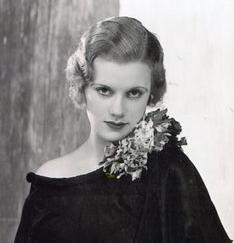
Marian Bergeron was Miss America in 1933. She went on to a career in big-band singing and public speaking. She was a major supporter of the Miss America Pageant.

The feminist art movement in the United States began in the early 1970s and sought to promote the study, creation, understanding and promotion of women's art. First-generation feminist artists include Judy Chicago, Miriam Schapiro, Suzanne Lacy, Judith Bernstein, Sheila de Bretteville, Mary Beth Edelson, Carolee Schneeman, Rachel Rosenthal, and many other women. They were part of the Feminist art movement in the United States in the early 1970s to develop feminist writing and art. The movement spread quickly through museum protests in both New York and Los Angeles, via an early network called W.E.B. that disseminated news of feminist art activities from 1971 to 1973 in a nationally circulated newsletter, and at conferences such as the West Coast Women's Artists Conference held at California Institute of the Arts and the Conference of Women in the Visual Arts, at the Corcoran School of Art in Washington, D.C..

Feminist art is a category of art associated with the feminist movement of the late 1960s and 1970s. Feminist art highlights the societal and political differences women experience in their lives. The goal of this art form is to bring a positive and understanding change to the world, leading to equality or liberation. Media used range from traditional art forms, such as painting, to more unorthodox methods such as performance art, conceptual art, body art, craftivism, video, film, and fiber art. Feminist art has served as an innovative driving force toward expanding the definition of art by incorporating new media and a new perspective.

The Elizabeth A. Sackler Center for Feminist Art is located on the fourth floor of the Brooklyn Museum, New York City, United States. Since 2007 it has been the home of Judy Chicago's 1979 installation, The Dinner Party. The Center's namesake and founder, Elizabeth A. Sackler, is a philanthropist, art collector, and member of the Sackler family.
Frances Spalding is a British art historian, writer and a former editor of The Burlington Magazine.
The feminist art movement refers to the efforts and accomplishments of feminists internationally to produce art that reflects women's lives and experiences, as well as to change the foundation for the production and perception of contemporary art. It also seeks to bring more visibility to women within art history and art practice. The movement challenges the traditional hierarchy of arts over crafts, which views hard sculpture and painting as superior to the narrowly perceived 'women's work' of arts and crafts such as weaving, sewing, quilting and ceramics. Women artists have overturned the traditional view by, for example, using unconventional materials in soft sculptures, new techniques such as stuffing, hanging and draping, and for new purposes such as telling stories of their own life experiences. The objectives of the feminist art movement are thus to deconstruct the traditional hierarchies, represent women more fairly and to give more meaning to art. It helps construct a role for those who wish to challenge the mainstream narrative of the art world. Corresponding with general developments within feminism, and often including such self-organizing tactics as the consciousness-raising group, the movement began in the 1960s and flourished throughout the 1970s as an outgrowth of the so-called second wave of feminism. It has been called "the most influential international movement of any during the postwar period."
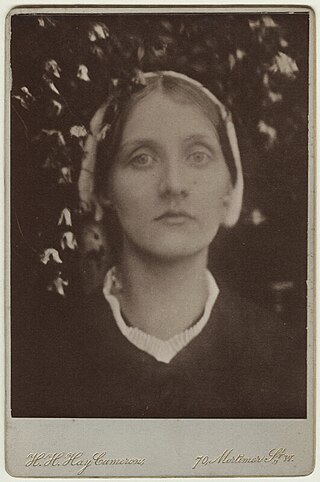
Julia Prinsep Stephen was an English Pre-Raphaelite model and philanthropist. She was the wife of the biographer Leslie Stephen and mother of Virginia Woolf and Vanessa Bell, members of the Bloomsbury Group.
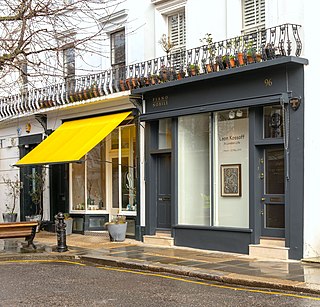
Piano Nobile is a commercial art gallery in London, England, specialising in twentieth-century British art. It was established by Dr Robert Travers at premises in Richmond in 1985. In 2000, the gallery moved to its current address at 129 Portland Road, London. In 2019, an additional gallery space was acquired at 96 Portland Road. Between 2008 and 2019, the gallery also had an exhibition space at Kings Place in King’s Cross.

















